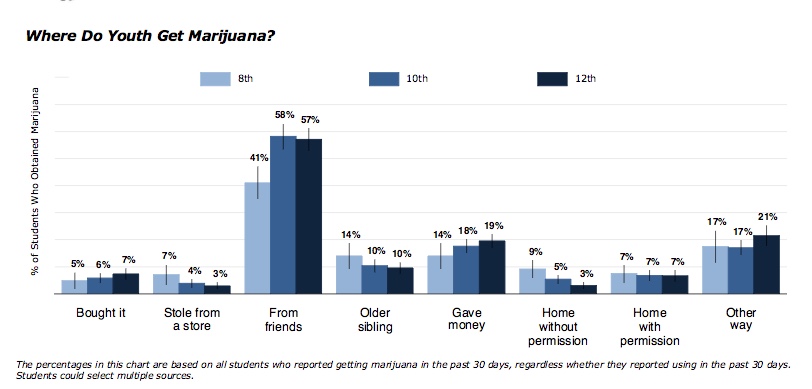The results are in: Underage use not getting higher
April 6, 2017
The argument against the legalization of marijuana has taken another blow with the release of new survey results in Washington.
The Washington State Healthy Youth Survey, which is a biennial survey which polls the health behavior and habits of sixth, eighth, tenth and twelfth graders from all 39 counties and 236 different school districts, revealed their findings from the 2016 survey that support that there is no correlation between underage marijuana use and marijuana legalization.
Marijuana use in all grades surveyed (over 230,000 total) has decreased slightly since 2014, the year marijuana was legalized in this state.
The perceived ease of obtaining marijuana is relatively unchanged which leads Jill Hoxmeier, public health professor at CWU, to think perceptions about marijuana are not on the same level as alcohol despite recent legalization.
Legalization “hasn’t changed the perception that pot is easier to get,” Hoxmeier said. “Underage marijuana use is still stigmatized differently than underage drinking.”
While the percentage of students surveyed who used alcohol in the past 30 days was higher than students who used marijuana, Hoxmeier said the stigma against marijuana, primarily in rural areas, discourages students from use.
While these findings are a positive sign for the nationwide movement towards legalization, only two years have passed since recreational use became legal in Washington. Hoxmeier said that from a scientific perspective, more time would be needed to make the findings truly significant.
“I don’t think two years is enough,” Hoxmeier said. “I think it’d be important to see that the trends are the same across all states where pot is legal and build the case. I only err on the side of caution because it hasn’t been a longer amount of time. But the short term results show that [underage] use isn’t increasing with legalization.”
The full survey results can be found through the Washington state Department of Health website. The results can be broken up by grade, age, county, and school district, showing the varying scope of the random testing procedure.


